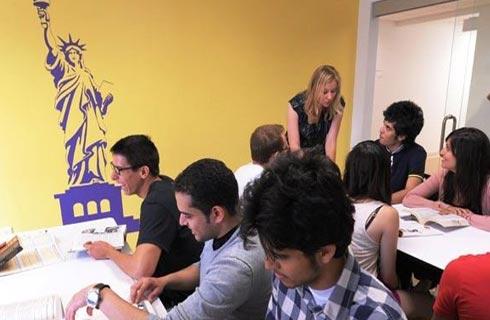地质科学哲学博士
Doctor of Philosophy in Geosciences - Petrology

学历文凭
Ph.D.

专业院系
Geosciences

开学时间

课程时长

课程学费

国际学生入学条件
B. A minimum average of B for all undergraduate coursework and a B average for courses in the sciences.
C. Results of the Graduate Record Examination (GRE) General Test.
D. Acceptance by both the Department and the Graduate School.
In special cases, a student not meeting requirements A and B may be admitted on a conditional basis. Upon admission, the student will be informed of the requirements that must be satisfied for termination of this status.
An applicant must have a minimum cumulative grade point average of 3.00 on a 4.00 point scale.
IELTS: Overall score of 6.5, with no subsection recommended to be below 6
TOEFL: 90 for admission to a doctoral program
An applicant must have a minimum cumulative grade point average of 3.00 on a 4.00 point scale.
IDP—雅思考试联合主办方

雅思考试总分
6.5
- 雅思总分:6.5
- 托福网考总分:90
- 托福笔试总分:160
- 其他语言考试:Duolingo - 110
CRICOS代码:
申请截止日期: 请与IDP联系 以获取详细信息。
课程简介
Opportunities for graduate study and research in petrology range from atomic-scale investigations, for example, dealing with the structure of glasses, to global questions regarding the relationships of magmatic suites to large-scale mantle and crustal processes. Projects include spectroscopic and quantum chemical approaches for examining mechanisms of volatile dissolution and crystal nucleation in melts and experimental investigations of the effects of pressure, temperature, and volatile composition on stabilities of minerals and melts, with corresponding development of thermodynamic models. Field and laboratory work are integrated in some studies. Experiments are being applied to Martian meteorites. This work is supported by experimental facilities that contain controlled-atmosphere gas-mixing furnaces, cold-seal bombs, piston-cylinder apparatus, internally heated pressure vessels, as well as multi-anvil apparatus for experiments at high temperature and pressure conditions. Analytical facilities include an electron microprobe, a transmission electron microscope, thermal ionization mass spectrometers, a M'ssbauer lab, and X-ray diffraction facilities.
相关申请
 预科
预科 奖学金
奖学金 实习机会
实习机会 在校学习
在校学习 跨境学习
跨境学习 校园授课-线上开始
校园授课-线上开始 在线/远程学习
在线/远程学习
开学时间&学费
学费信息仅供参考,请与IDP联系以获取详细信息
| 开学时间 | 时长 | 学费 | 地点 |
|---|
学校排名

世界排名251
数据源:
泰晤士高等教育世界大学排名
关于纽约州立大学石溪分校

石溪大学(简称 SBU)成立于 1957 年,位于纽约州长岛,是一所充满活力的公立大学。该大学共有约 25000 名学生,其中包括 17000 多名本科生,支持着一个庞大而多元化的学术社区,同时提供丰富而令人兴奋的大学体验。该大学提供广泛的本科、研究生和博士课程,涵盖多个领域。该校在科学、工程和医学方面拥有坚实的基础,并辅以艺术、人文和社会科学课程。热门专业包括生物医学工程、海岸环境研究和计算机科学,每个专业都将学校的前沿研究与基于实践经验的学习相结合,为学生完成学业后从事专业工作做好准备。根据2024年《美国新闻与世界报道 》,SBU 在纽约州公立大学中排名第一,在全美公立大学中排名第 26 位。同一份研究报告还将该大学的社会流动性排在全美第 12 位,并跻身全美十大最多元化大学之列。SBU 是纽约州立大学(SUNY)系统的一部分,并于 2022 年被纽约州州长正式指定为纽约州立大学的两所旗舰大学之一。该大学的长岛校区为学生提供了一系列美丽的海滩,同时还拥有靠近纽约市的所有优势,为学生提供了丰富的教育和课外活动机会。
本校相关课程

妇女与性别研究文学士
学历文凭
Bachelor Degree
开学日期
课程费用总额


技术系统管理理学学士
学历文凭
Bachelor Degree
开学日期
课程费用总额


可持续发展研究文学学士学位
学历文凭
Bachelor Degree
开学日期
课程费用总额


西班牙语言文学学士学位
学历文凭
Bachelor Degree
开学日期
课程费用总额


社会学文学学士
学历文凭
Bachelor Degree
开学日期
课程费用总额


社会工作科学学士学位
学历文凭
Bachelor Degree
开学日期
课程费用总额










 美国
美国